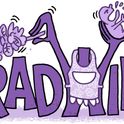Prisoner's dilemma at Sotheby's
Alfred Taubman, the majority shareholder and former chairman of Sotheby's, was recently sent to prison for his part in a conspiracy to fix prices with rival auctioneer, Christie's. Sotheby's former chief executive, Diana "DeDe" Brooks, was also convicted. The trial judge accused the two of many failings, including arrogance, greed and deceit. From a business perspective, their real crime was stupidity.
In the early 1990s, rivalry between the two auction houses was causing heavy losses to both. Taubman apparently told Brooks that they were "killing each other on the bottom line and it was time to do something about it." According to the prosecution, Taubman and his opposite number at Christie's, Anthony Tennant, agreed to reduce competition between their firms. More detailed negotiations were left to Brooks and Christopher Davidge, former CEO of Christie's. This led to both firms raising their fees.
A memo, allegedly by Tennant, stated that "a hundred industries, banks, etc. all do it without talking about it..." This is surely correct. For instance, investment banks charge a 7 per cent commission for floating a company in the US but less than half that amount in Europe. The costs of doing business in either continent does not explain the discrepancy. I am not suggesting that the bankers have got together to fix prices. As the author of the memo says, it is arranged without communication.
Prisoner's dilemma is the best-known problem in game theory. It describes a situation in which two prisoners are held separately and offered inducements to betray the other. There are several possible outcomes: If one talks and the other stays silent, the squealer goes free and the other is punished; if each rats, they are both punished; if both play dumb, they receive a lesser penalty. The rational solution to a single game of prisoner's dilemma is for both to squeal.
Some 20 years ago, Robert Axelrod, a US academic, discovered that if the prisoner's dilemma is played regularly, the prisoners may start to cooperate even though kept apart. They do this through adopting fixed strategies, the most successful of which is known as "tit for tat," a policy of reciprocity. Axelrod found an example from the trenches during the first world war. When stationed for long periods opposite each other, unspoken truces emerged between the British and German troops. If either side reneged on the compact, revenge would be exacted by the injured party, after which the truce would return.
The implications of tit for tat were soon appreciated in the business world. There is a famous case study of three airlines displaying prices for the same route. Initially, each charged a fare of $250, identified in the booking system with the letter Y. Then one airline dropped its price to $125. On the same day, the two other carriers cut their fares to $100, with the unsubtle booking code, FU. Quickly, the first airline put its fare back to $250 and the others followed. This practice is known as price-signalling. Its message is simply, "whatever you do, I will match it." The cartel is restored without any secret meetings. No incriminating evidence exists to put executives behind bars.
If a chief executive feels he needs to get a more direct message to the competition, this is best achieved through the media. He makes a public statement, such as "people aren't making any money in this industry because margins are too low..." and then raises prices. Other companies in the sector soon follow. Such behaviour is known as tacit collusion and is against the law. Yet no one has ever gone to prison for it. Tit for tat is taught in business schools and disseminated by management consultants. The evidence against Taubman and Brooks exceeded 500 pages of internal company documents. Had they learnt game theory, they might have achieved the same results with little or no risk.
The Woolley paradox
The stock market is said to be efficient when all public information is included in share prices. In an efficient market, it does not pay to spend time and money arriving at investment decisions, since there are no price discrepancies to discover. Yet if investors stop doing their homework, the market will become inefficient. This is known as the Grossman-Stiglitz paradox. Investors influenced by the efficient market hypothesis have placed more and more money in index funds, which are both cheap and produce better returns than most fund managers. Index funds are the practical corollary to the Grossman-Stiglitz paradox, they thrive on efficiency but, being blind, they contribute to inefficiency.
In most markets, if pricing becomes too inefficient, people will enter the market and earn excess returns, until prices have been driven back towards their intrinsic value. But according to Paul Woolley, of investment firm GMO Woolley, this does not happen in the stock market. One investor's positive performance relative to the index is equalled by another's poor performance. In fact, the situation is worse since there are transaction costs to take into account. The median returns of fund managers, observes Woolley, must inevitably be worse than the market's. Since they cannot identify the minority of outperforming fund managers, people have no choice but to continue investing in index funds, regardless of how inefficient the market becomes.












